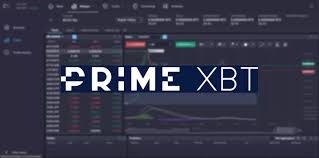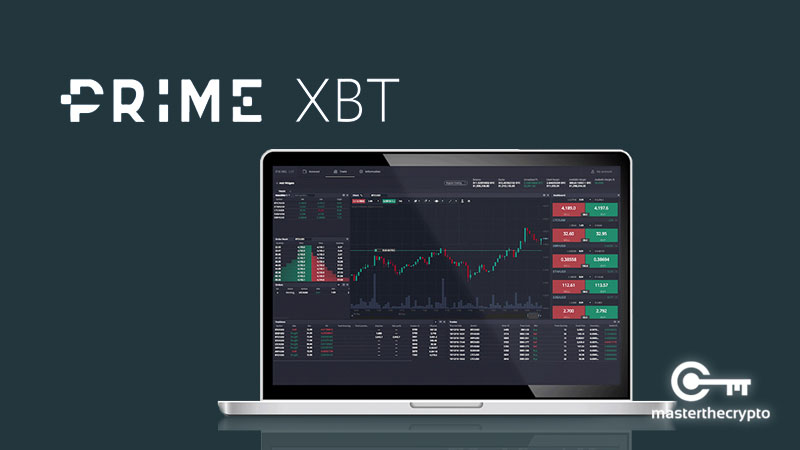Understanding PrimeXBT Risk Disclosure Safeguarding Your Investments

Understanding PrimeXBT Risk Disclosure
In the fast-paced world of trading, being aware of the risks involved is crucial. The PrimeXBT Risk Disclosure PrimeXBT Risk Disclosure outlines the various risks associated with trading on their platform, designed to help investors make informed decisions. Risk disclosure is more than just a regulatory requirement; it serves as a guide for traders to navigate through the complexities and uncertainties of the financial markets. This article delves into the essence of risk disclosure, particularly in the context of PrimeXBT, providing insights for both new and experienced traders.
The Significance of Risk Disclosure in Trading
Risk disclosure plays a pivotal role in the trading landscape, offering transparency and fostering a culture of informed trading. By clearly outlining potential risks, PrimeXBT empowers its users to understand what they are getting into. This transparency is vital as it helps traders to formulate strategies that align with their risk tolerance and investment goals.
In many jurisdictions, risk disclosure is a legal requirement that trading platforms must adhere to. However, beyond the legalities, it represents a commitment to user education. Platforms that prioritize risk disclosure demonstrate that they respect their clients and want them to succeed in their trading endeavors.
Types of Risks Disclosed by PrimeXBT
When engaging in trading activities on PrimeXBT, several types of risks must be understood:
1. Market Risk
Market risk, also known as systemic risk, refers to the possibility of losing money due to a decline in the market value of assets. In the context of cryptocurrencies and other trading instruments, market volatility can result in rapid price changes that can significantly affect positions. Understanding market risk is critical for managing potential losses effectively.
2. Leveraged Trading Risks
PrimeXBT offers leveraged trading, which can amplify both gains and losses. While the prospect of higher returns is enticing, it is essential to recognize that leveraging increases exposure to risks. Traders can end up losing more than their initial investment, making it vital to use leverage with caution and sound risk management strategies.
3. Liquidity Risk
Liquidity risk is the risk of being unable to execute trades without causing significant impact on the asset’s price. In volatile markets, liquidity may dry up, leading to slippage and unfavorable trade execution. Understanding liquidity conditions during trading is crucial to ensure adequate execution of orders.
4. Regulatory Risk
As regulations surrounding cryptocurrencies and trading are continually evolving, regulatory risk plays a significant role in trading decisions. Changes in laws or regulations can affect the operations of trading platforms and the legality of certain assets. Traders must stay informed about regulatory changes that could impact their trading activities.
5. Technology Risk

With the growing reliance on technology in the trading arena, technology risk warrants attention. This includes risks related to system outages, hacking attempts, or other cybersecurity threats. PrimeXBT, like other platforms, invests in security measures, but it is still paramount for users to take their own precautions, such as using two-factor authentication and keeping software updated.
Importance of a Personal Risk Assessment
While platforms like PrimeXBT provide essential risk disclosures, traders should also conduct personal risk assessments. A personal risk assessment involves evaluating one’s financial situation, investment objectives, and risk tolerance before engaging in trading activities. This self-analysis helps in identifying how much risk one is willing to take and what strategies align well with personal financial goals.
Creating a risk management plan is a vital part of this assessment. This plan could outline specific guidelines for position sizes, stop-loss orders, and overall exposure to different assets. A well-thought-out risk management strategy can help mitigate losses and protect one’s trading capital.
Utilizing Risk Management Tools on PrimeXBT
PrimeXBT provides several tools and features designed to assist traders in managing their risks effectively:
1. Stop-loss Orders
Stop-loss orders are essential tools for managing risk. By setting predetermined exit points, traders can limit potential losses by automatically closing positions when specified price levels are reached. This feature helps to enforce discipline and prevents emotional decision-making during volatile market conditions.
2. Position Sizing
Effective position sizing is crucial for risk management. Traders on PrimeXBT should determine the appropriate amount of capital to invest in each trade relative to their overall portfolio. This helps to limit exposure to individual trades and ensures that even a series of losses won’t lead to significant depletion of trading capital.
3. Diversification
Diversifying a trading portfolio can reduce risk. By spreading investments across various assets, traders on PrimeXBT might mitigate risks posed by any single asset’s performance. Diversification helps to create a more balanced approach, enhancing the potential for stable returns over time.
Consequences of Ignoring Risk Disclosure
Neglecting the insights provided by the PrimeXBT Risk Disclosure can lead to dire consequences. Traders who undertake risks without understanding the implications may face substantial financial losses. Ignoring risk warnings can result in overleveraged positions, inadequate capital management, and ultimately, the inability to recover from losses.
Furthermore, a lack of understanding can lead to poor trading decisions influenced by fear or greed, rather than rational evaluation grounded in risk awareness. This highlights the importance of taking the time to read and comprehend risk disclosures provided by trading platforms.
Conclusion
In conclusion, understanding the PrimeXBT Risk Disclosure is imperative for every trader wishing to succeed in the financial markets. By recognizing the various risks involved and applying sound risk management principles, traders can safeguard their investments and improve their chances of achieving their financial goals. As the landscape of trading continues to evolve, staying informed and proactive about risks will undoubtedly serve as a vital aspect of successful trading.
